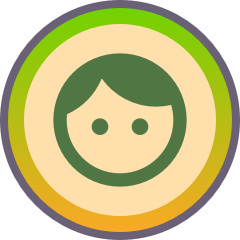We regulate the practice of Orgtology.
What is Orgtology?

Orgtology studies workplace systems and dynamics with the aim to increase performance and ensure relevance. The word is a blend between "organisation" and the Greek word "-logy", meaning the science of organisation. An Orgtologist can help organisations to perform and stay relevant. It holds eight core theories that deal with orgtelligence; work; results; leadership; team dynamics; and intrapersonal wellbeing.
What is Orgamatics?

Orgamatics is an orgtology field of study. Through this, we use scientific method to create strategy and drive operational efficiency. In so, it is key to grasp organisational systems. This includes orgtelligence (systems intelligence & human intellect), work (processes & projects), and results (efficiency & effectiveness). The term blends the words, "organisation" and "mathematics". It denotes the mathematical construct of an organisation.
What is Organamics?

Organamics is an orgtology field of study. In this field, we study the effect that people dynamics have on organisations. People can be abstract, unpredictable, and innovative. In so, they create a dynamic that is hard to grasp. We call this the X-Factor. It creates intrapersonal relations, teamwork, and leadership. These dynamics can change the nature of an organisation. The term blends the words, "organisation" and "dynamics".
Algorithm
| Term | Definition |
|---|---|
| Algorithm | In orgtology we use the terms “algorithm” and “process” synonymously. The term “algorithm” is mostly used in mathematics and computer science. It is an unambiguous specification of how to solve problems, perform calculations, do data processing, devise automated reasoning, and other tasks. In orgtology we see it as a set of rules that dictate the movement of activity to produce a predetermined output. We therefore see it as a process within Org. A process is any progressive movement towards a specific or general result. Process therefore directly implies causality, which means that there is always a cause that ignites an effect. In this “stimulus – response” relationship we must define several variables in relation to one another. Such variables are: dependency flow; time; task; authority; resources; outputs; targets; etc. A process implies transformation, and the result is always change at some level. Processes can be conscious or subconscious. Planning and corporate reengineering are conscious processes, whilst survival and evolution are subconscious processes. Any sequence of activity will create a process. Therefore, all projects and procedures are processes. Yet, not all processes are procedures or projects. All processes have a specific algorithm.
General Description...In mathematics and computer science, an algorithm is an unambiguous specification of how to solve a class of problems. Algorithms can perform calculation, data processing, automated reasoning, and other tasks. As an effective method, an algorithm can be expressed within a finite amount of space and time and in a well-defined formal language for calculating a function. Starting from an initial state and initial input (perhaps empty), the instructions describe a computation that, when executed, proceeds through a finite number of well-defined successive states, eventually producing "output" and terminating at a final ending state. The transition from one state to the next is not necessarily deterministic; some algorithms, known as randomized algorithms, incorporate random input.The concept of algorithm has existed for centuries. Greek mathematicians used algorithms in the sieve of Eratosthenes for finding prime numbers, and the Euclidean algorithm for finding the greatest common divisor of two numbers.The word algorithm itself is derived from the 9th century mathematician Muḥammad ibn Mūsā al-Khwārizmī, Latinized Algoritmi. A partial formalization of what would become the modern concept of algorithm began with attempts to solve the Entscheidungsproblem (decision problem) posed by David Hilbert in 1928. Later formalizations were framed as attempts to define "effective calculability" or "effective method". Those formalizations included the Gödel–Herbrand–Kleene recursive functions of 1930, 1934 and 1935, Alonzo Church's lambda calculus of 1936, Emil Post's Formulation 1 of 1936, and Alan Turing's Turing machines of 1936–37 and 1939.
Hits - 1822
Synonyms:
Process |
Our Featured Blog Articles
The Orgtology Club Leader Board
Our Latest Blog Articles
Orgtology Glossary
The Orgtology Club - Stream
-
Stream item published successfully. Item will now be visible on your stream.
-
Post is under moderationStream item published successfully. Item will now be visible on your stream.
-
Stream item published successfully. Item will now be visible on your stream.
-
Post is under moderationStream item published successfully. Item will now be visible on your stream.
-
Stream item published successfully. Item will now be visible on your stream.






